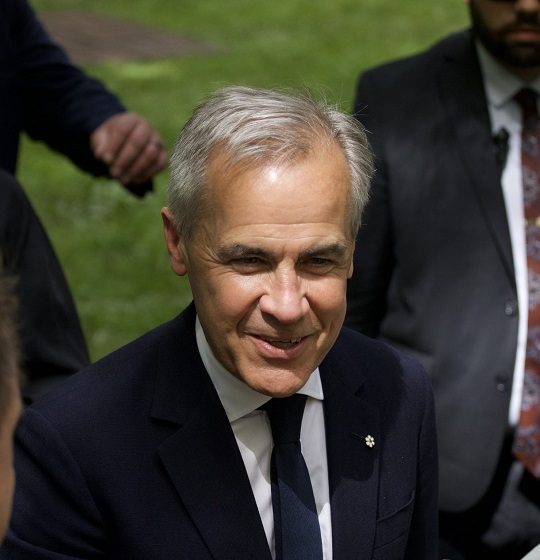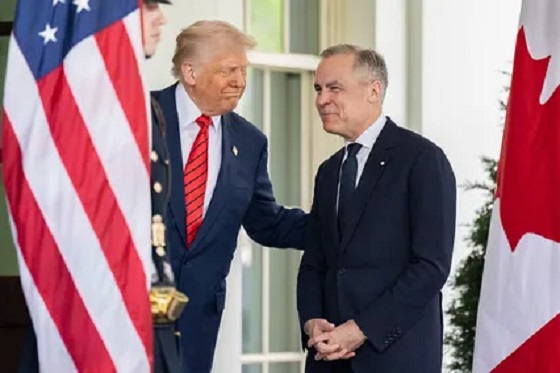National
Trudeau gov’t considers ban on portable electric heaters while Canadians struggle to afford to stay warm

From LifeSiteNews
Health Canada has opened a 90-day consultation period titled “Comment period for the danger to human health or safety assessment for portable electric heaters” for stakeholders as well as the public to give digital comments via email on their opinions if the heaters should be banned.
Canadian officials are looking for sufficient “information” from a variety of stakeholders on the use of popular portable electric heaters over “safety” issues while attempting to ban the devices despite the fact the government has made heating homes more expensive due to a punitive carbon tax.
Health Canada, with a notice posted on its website, has now added portable electric heaters as a hazardous consumer product because they can “pose a danger to human health or safety.”
Going one step further, Health Canada has opened a 90-day consultation period titled “Comment period for the danger to human health or safety assessment for portable electric heaters” for stakeholders as well as the public to give digital comments via email on their opinions if the heaters should be banned.
“Health Canada will consider these comments when making a determination on whether there is a danger to human health or safety posed by these products,” the agency noted.
According to Health Canada, if it cannot gather enough evidence that compact electric heaters do indeed pose a safety risk, the devices will not be banned.
The consultation period opened on February 19 and will close on May 19.
The Trudeau government is trying to force net-zero regulations on all Canadian provinces, notably on electricity generation, as early as 2035. His government has also refused to extend a carbon tax exemption on heating fuels to all provinces, allowing only Atlantic provinces this benefit.
According to Statistics Canada, “Energy Poverty,” which could be described as one not being able to “maintain healthy indoor temperatures” throughout the year, is an issue nationwide. Due to the carbon tax imposed by the Trudeau government making everything more expensive, many Canadians are struggling to afford basics like electricity, water, and, most important for winter weather, natural gas for furnaces.
Indeed, a recent report released by McGill University shows that about one-in-five Canadian households face some form of “energy poverty” due to high utility costs.
Last fall, Statistics Canada released findings showing that 14% of Canadians dealt with “unsafe or uncomfortable temperatures” inside their homes no less than four weeks out of the year.
The irony of the Statistics Canada report is that, as reported by LifeSiteNews, Trudeau’s carbon tax is costing Canadians hundreds of dollars annually, as government rebates are not enough to compensate for high fuel costs.
Franco Terrazzano, federal director of the Canadian Taxpayers Federation, told LifeSiteNews last month that “If the government wanted to make all areas of life more affordable, the government should leave more money in people’s pockets and cut taxes.”
“Trudeau should completely scrap his carbon tax,” he added.
The electric heaters being investigated include portable baseboard heaters, fan-driven heaters, electric-only heaters, and liquid-filled radiator-style heaters. Health Canada claims that the heaters can cause a fire hazard due to faulty wiring and can overheat.
It should be noted that in many countries such as Mexico portable electric heaters are the norm. While they can pose fire hazards, most modern heaters incorporate automatic shutdowns should the devices be knocked over.
Heaters that are permanently connected are not under review.
Health Canada says that there have been 252 reported incidents, with five deaths and 10 injuries, from 2011 to 2023.
As for Trudeau’s carbon tax, it has made everything more expensive. A report from September 5, 2023, by Statistics Canada shows food prices are rising faster than headline inflation at a rate of between 10% and 18% per year.
According to a recent Statistics Canada survey of supermarket prices, Canadians are paying 12% more for carrots, 14% more for hamburger (ground meat), and 27% more for baby formula.
National
How Long Will Mark Carney’s Post-Election Honeymoon Last? – Michelle Rempel Garner

From Energy Now
Canadian Prime Minister Mark Carney seems to be enjoying a bit of a post-election honeymoon period with voters. This is a normal phenomenon in Canadian politics – our electorate tends to give new leaders the benefit of the doubt for a time after their election.
So the obvious question that arises in this circumstance is, how long will it last?
I’ve had a few people ask me to speculate about that over the last few weeks. It’s not an entirely straightforward question to answer, because external factors often need to be considered. However, leaders have a lot of control too, and on that front, questions linger about Mark Carney’s long-term political acumen. So let’s start there.
Having now watched the man in action for a hot minute, there seems to be some legs to the lingering perception that, as a political neophyte, Mr. Carney struggles to identify and address political challenges. In the over 100 days that he’s now been in office, he’s laid down some proof points on this front.
For starters, Mr. Carney seems to not fully grasp that his post-election honeymoon is unfolding in a starkly different political landscape than that of his predecessor in 2015. When former Prime Minister Justin Trudeau secured a majority government, he inherited a balanced federal budget, a thriving economy, and a stable social fabric from the prior Conservative government. These favorable conditions gave Trudeau the time and flexibility to advance his political agenda. By contrast, Canadians today are grappling with crises in affordability, employment, and crime – issues that were virtually non-existent in 2015. As a result, public patience with a new political leader may wear thin much more quickly now than it did a decade ago.
So in that, Carney doesn’t have much time to make material progress on longstanding irritants like crime and affordability, but to date, he really hasn’t. In fact, he hasn’t even dedicated much space in any of his daily communications to empathizing with the plight of the everyday Canadian, eschewing concern for bread and butter issues for colder corporate speak. So if predictions about a further economic downturn in the fall ring true, he may not have the longer term political runway Justin Trudeau once had with the voting public, which doesn’t bode well for his long term favourables.
Carney’s apparent unease with retail politics won’t help him on that front, either. For example, at the Calgary Stampede, while on the same circuit, I noticed him spending the bulk of his limited time at events – even swish cocktail receptions – visibly eyeing the exit, surrounded by an entourage of fartcatchers whose numbers would have made even Trudeau blush. Unlike Trudeau, whose personal charisma secured three election victories despite scandals, Carney struggles to connect with a crowd. This political weakness may prove fatal to his prospects for an extended honeymoon, even with the Liberal brand providing cover.
It’s also too early to tell if Carney has anyone in his inner circle capable of grasping these concepts. That said, leaders typically don’t cocoon themselves away from people who will give blunt political assessments until the very end of their tenures when their political ends are clear to everyone but them. Nonetheless, Carney seems to have done exactly that, and compounded the problem of his lack of political acumen, by choosing close advisors who have little retail political experience themselves. While some have lauded this lack of political experience as a good thing, not having people around the daily table or group chat who can interject salient points about how policy decisions will impact the lives of day to day Canadians probably won’t help Carney slow the loss of his post-election shine.
Further proof to this point are the post-election grumblings that have emerged from the Liberal caucus. Unlike Trudeau, who started his premiership with an overwhelming majority of his caucus having been freshly elected, Carney has a significant number of old hands in his caucus who carry a decade of internal drama, inflated sense of worth, and personal grievances amongst them. As a political neophyte, Carney not only has to prove to the Canadian public that he has the capacity to understand their plight, he also has to do the same for his caucus, whose support he will uniformly need to pass legislation in a minority Parliament.
To date, Carney has not been entirely successful on that front. In crafting his cabinet, he promoted weak caucus members into key portfolios like immigration, kept loose cannons in places where they can cause a lot of political damage (i.e. Steven Guilbeaut in Heritage), unceremoniously dumped mavericks who possess big social media reach without giving them a task to keep them occupied, and passed over senior members of the caucus who felt they should either keep their jobs or have earned a promotion after carrying water for a decade. Underestimating the ability of a discontented caucus to derail a leader’s political agenda – either by throwing a wrench into the gears of Parliament, leaking internal drama to media, or underperformance – is something that Carney doesn’t seem to fully grasp. Said differently, Carney’s (in)ability to manage his caucus will have an impact on how long the shine stays on him.
Mark Carney’s honeymoon as a public figure also hinges upon his (arguably hilarious) assumption that the federal public service operates in the same way that private sector businesses do. Take for example, a recent (and hamfistedly) leaked headline, proactively warning senior public servants that he might fire them. In the corporate world, where bonuses and promotions are tied to results, such conditions are standard (and in most cases, entirely reasonable). Yet, after a decade of Liberal government expansion and lax enforcement of performance standards, some bureaucrats have grown accustomed to and protective of Liberal slipshod operating standards. Carney may not yet understand that many of these folks will happily leak sensitive information or sabotage policy reforms to preserve their status quo, and that both elegance and political will is required to enact change within the Liberal’s bloated government.
On that front, Mr. Carney has already gained a reputation for being dismissive and irritable with various players in the political arena. While this quick-tempered demeanor may have remained understated during his relatively brief ascent to the Prime Minister’s office, continued impatience could soon become a prominent issue for both him and his party. Whether dismissing reporters or publicly slighting senior cabinet members, if Carney sustains this type of arrogance and irritability he won’t be long for the political world. Without humility, good humor, patience, and resilience he won’t be able to convince voters, the media, the bureaucracy, and industry to support his governing agenda.
But perhaps the most important factor in judging how long Mr. Carney’s honeymoon will last is that to date he has shown a striking indifference to nuclear-grade social policy files like justice, immigration, and public safety. His appointment of underperforming ministers to these critical portfolios and the absence of a single government justice bill in Parliament’s spring session – despite crime being a major voter concern – is a big problem. Carney himself rarely addresses these issues – likely due to a lack of knowledge and care – leaving them to the weakest members of his team. None of this points to long term political success for Carney.
So Mr. Carney needs to understand that Canadians are not sterile, esoteric units to be traded in a Bay Street transaction. They are real people living real lives, with real concerns that he signed up to address. He also needs to understand that politics (read, the ability to connect with one’s constituents and deliver for them) isn’t an avocation – it’s a learned skill of which he is very much still a novice practitioner.
Honeymoon or not, these laws of political gravity that Mr. Carney can’t avoid for long, particularly with an effective opposition litigating his government’s failures.
In that, I think the better question is not if Mark Carney can escape that political gravity well, but whether he’ll stick around once his ship inevitably gets sucked into it.
Only time – and the country’s fortunes under his premiership – will tell.
Business
Trump confirms 35% tariff on Canada, warns more could come

Quick Hit:
President Trump on Thursday confirmed a sweeping new 35% tariff on Canadian imports starting August 1, citing Canada’s failure to curb fentanyl trafficking and retaliatory trade actions.
Key Details:
- In a letter to Canadian Prime Minister Mark Carney, Trump said the new 35% levy is in response to Canada’s “financial retaliation” and its inability to stop fentanyl from reaching the U.S.
- Trump emphasized that Canadian businesses that relocate manufacturing to the U.S. will be exempt and promised expedited approvals for such moves.
- The administration has already notified 23 countries of impending tariffs following the expiration of a 90-day negotiation window under Trump’s “Liberation Day” trade policy.
Diving Deeper:
President Trump escalated his tariff strategy on Thursday, formally announcing a 35% duty on all Canadian imports effective August 1. The move follows what Trump described as a breakdown in trade cooperation and a failure by Canada to address its role in the U.S. fentanyl crisis.
“It is a Great Honor for me to send you this letter in that it demonstrates the strength and commitment of our Trading Relationship,” Trump wrote to Prime Minister Mark Carney. He added that the tariff response comes after Canada “financially retaliated” against the U.S. rather than working to resolve the flow of fentanyl across the northern border.
Trump’s letter made clear the tariff will apply broadly, separate from any existing sector-specific levies, and included a warning that “goods transshipped to evade this higher Tariff will be subject to that higher Tariff.” The president also hinted that further retaliation from Canada could push rates even higher.
However, Trump left the door open for possible revisions. “If Canada works with me to stop the flow of Fentanyl, we will, perhaps, consider an adjustment to this letter,” he said, adding that tariffs “may be modified, upward or downward, depending on our relationship.”
Canadian companies that move operations to the U.S. would be exempt, Trump said, noting his administration “will do everything possible to get approvals quickly, professionally, and routinely — In other words, in a matter of weeks.”
The U.S. traded over $762 billion in goods with Canada in 2024, with a trade deficit of $63.3 billion, a figure Trump called a “major threat” to both the economy and national security.
Speaking with NBC News on Thursday, Trump suggested even broader tariff hikes are coming, floating the idea of a 15% or 20% blanket rate on all imports. “We’re just going to say all of the remaining countries are going to pay,” he told Meet the Press moderator Kristen Welker, adding that “the tariffs have been very well-received” and noting that the stock market had hit new highs that day.
The Canadian announcement is part of a broader global tariff rollout. In recent days, Trump has notified at least 23 countries of new levies and revealed a separate 50% tariff on copper imports.
“Not everybody has to get a letter,” Trump said when asked if other leaders would be formally notified. “You know that. We’re just setting our tariffs.”
-

 International2 days ago
International2 days agoSecret Service suspends six agents nearly a year after Trump assassination attempt
-

 Bruce Dowbiggin1 day ago
Bruce Dowbiggin1 day agoThe Covid 19 Disaster: When Do We Get The Apologies?
-

 Crime21 hours ago
Crime21 hours agoSweeping Boston Indictment Points to Vast Chinese Narco-Smuggling and Illegal Alien Labor Plot via Mexican Border
-

 Alberta1 day ago
Alberta1 day agoAlberta school boards required to meet new standards for school library materials with regard to sexual content
-

 Business2 days ago
Business2 days agoWEF-linked Linda Yaccarino to step down as CEO of X
-

 Automotive2 days ago
Automotive2 days agoAmerica’s EV Industry Must Now Compete On A Level Playing Field
-

 Environment21 hours ago
Environment21 hours agoEPA releases report on chemtrails, climate manipulation
-

 Business2 days ago
Business2 days ago‘Experts’ Warned Free Markets Would Ruin Argentina — Looks Like They Were Dead Wrong



